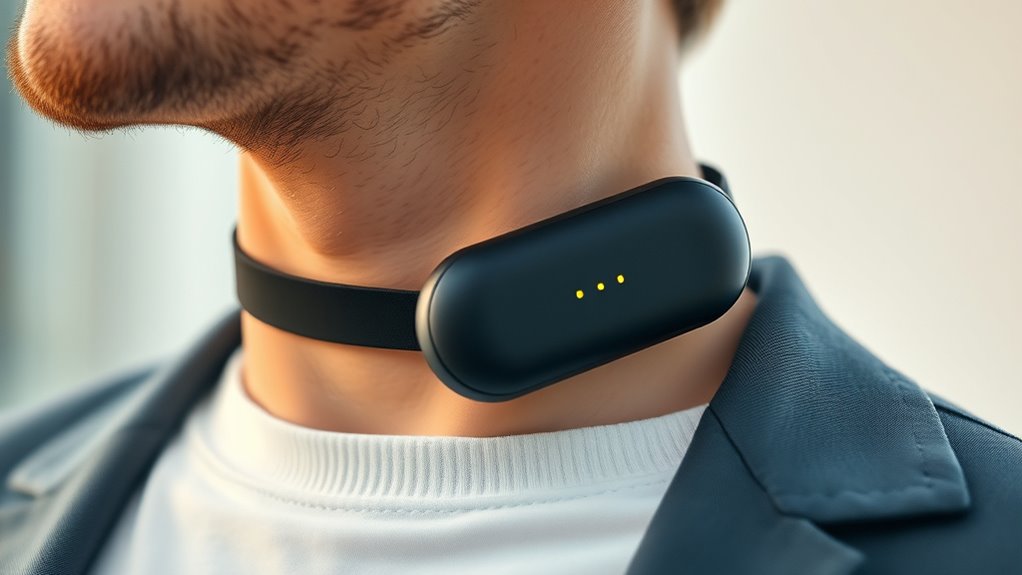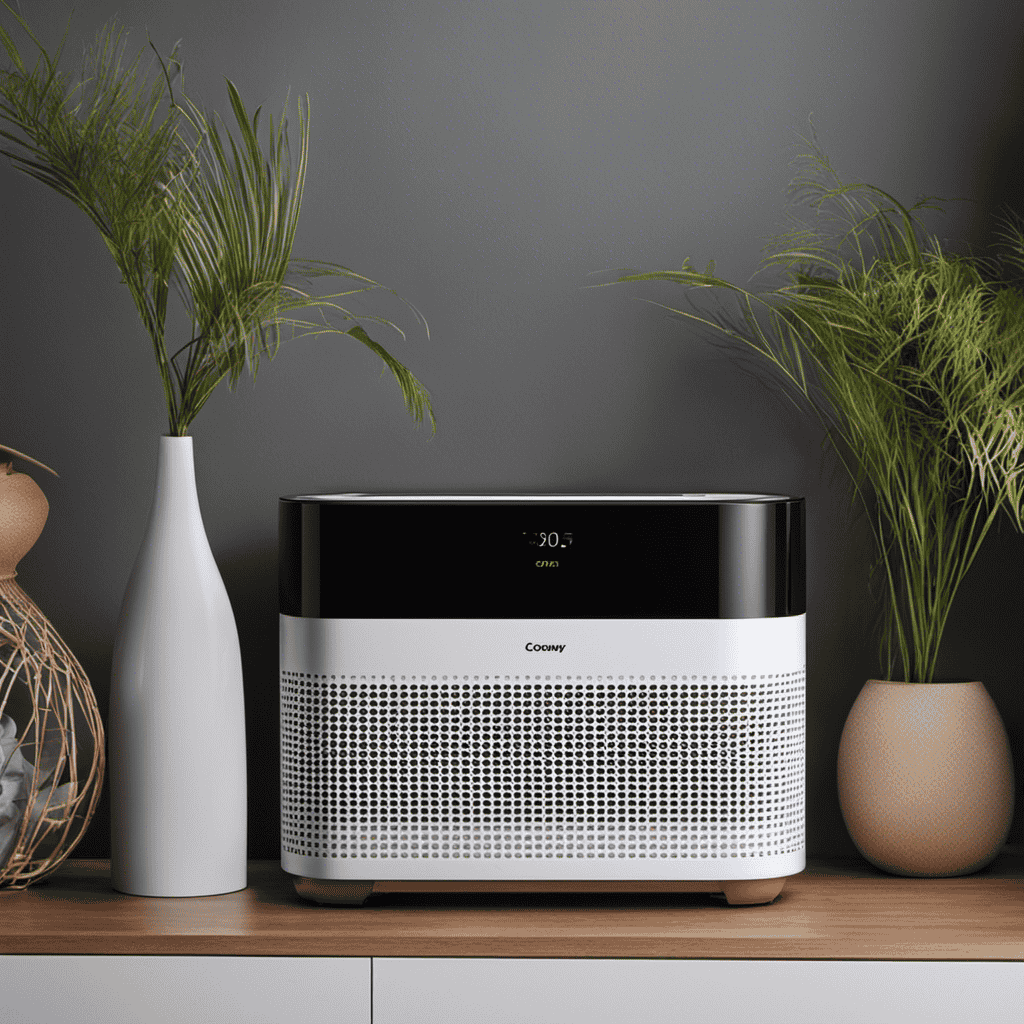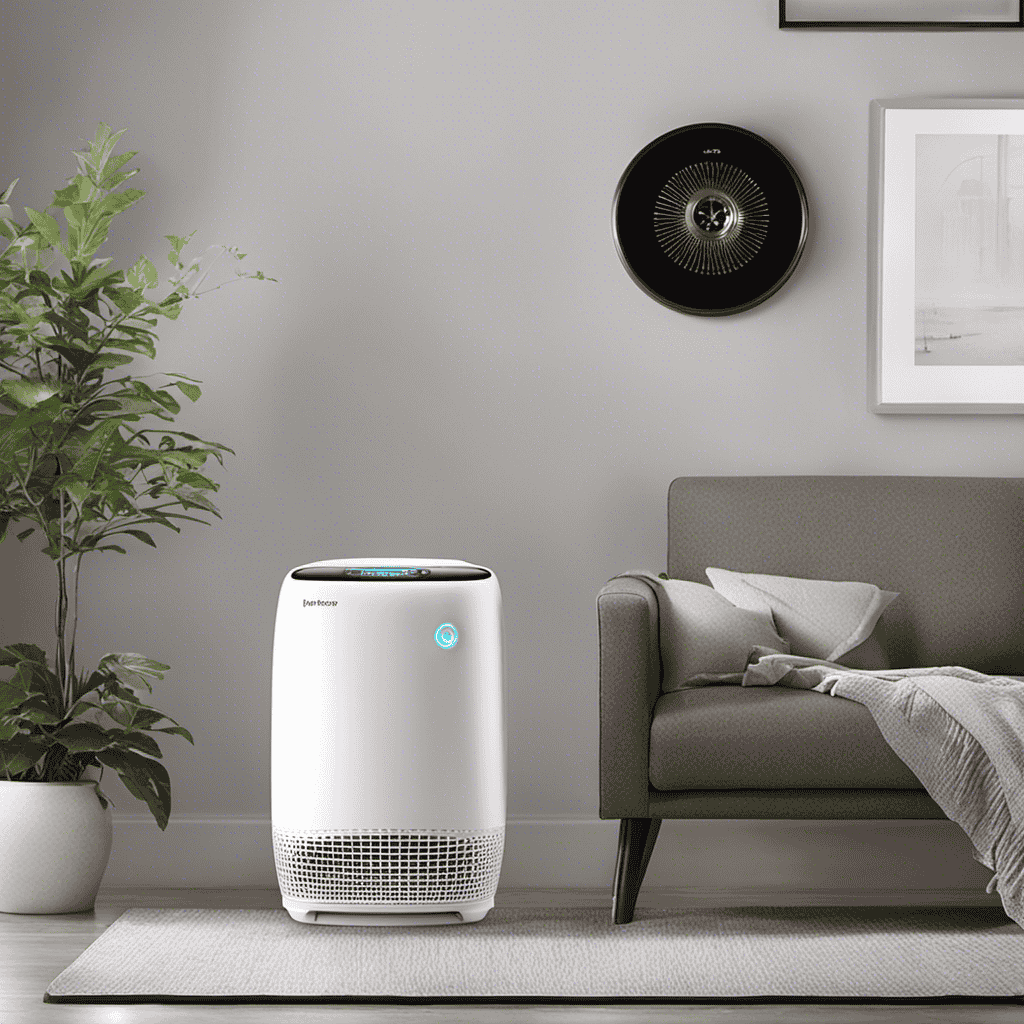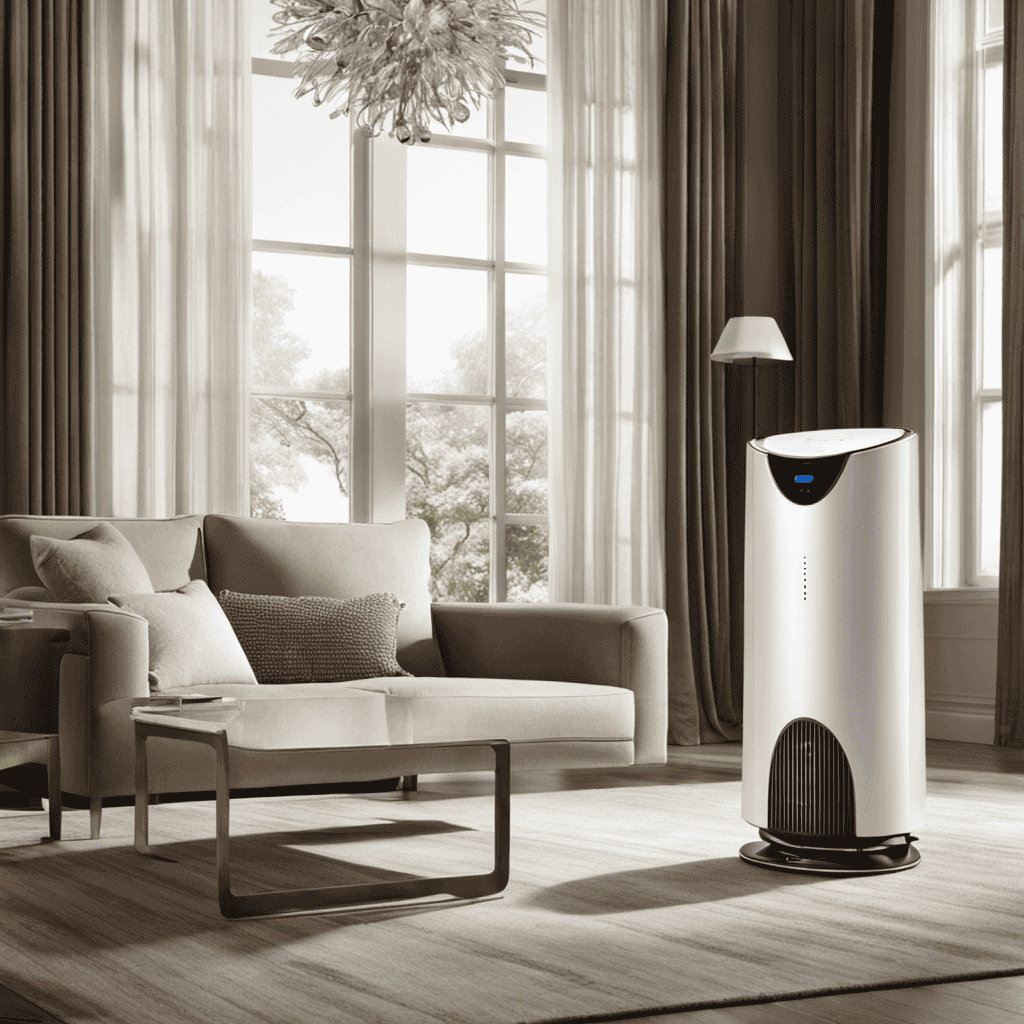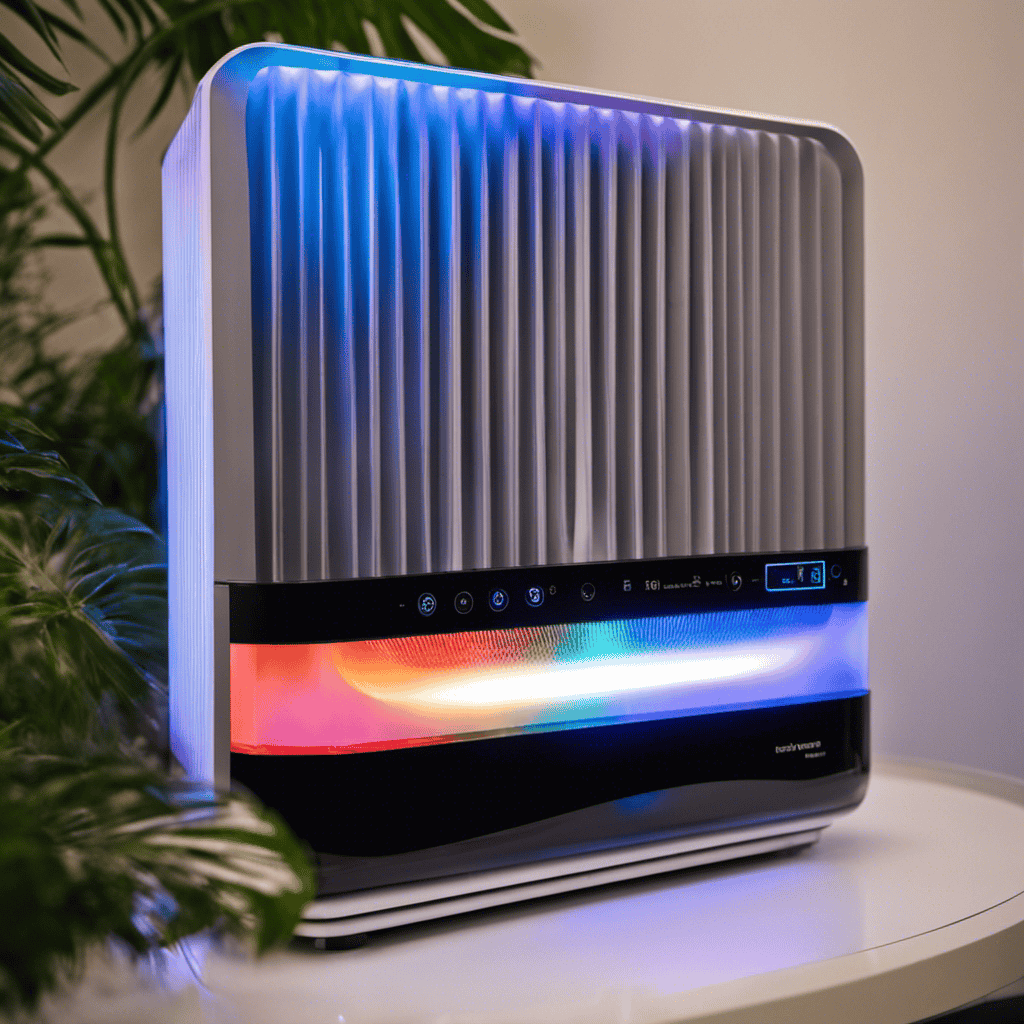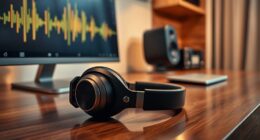Personal wearable air purifiers can help filter pollutants and allergens around you using small, efficient filters like HEPA or activated carbon. They often include fans, sensors, and rechargeable batteries to improve air quality and convenience. However, their effectiveness depends on filter quality, proper maintenance, and device design. While they might provide some protection, they aren’t foolproof and should be part of a broader air quality strategy. Explore more to see if they’re right for you.
Key Takeaways
- The effectiveness of personal wearable air purifiers varies based on filter quality, device design, and proper maintenance.
- They can improve localized air quality but may have limitations in filtering pollutants in highly polluted environments.
- Scientific evidence supporting their overall efficacy is limited; they are often best used as supplementary protection.
- Proper filter replacement, device quality, and correct usage are essential for safety and optimal performance.
- Users should evaluate device features, reviews, and technological advancements to ensure their wearable purifier meets their needs.
How Do Personal Wearable Air Purifiers Function?

Personal wearable air purifiers work by actively filtering the air around you to remove pollutants and allergens. They typically use small, efficient filters to cleanse the air you breathe, providing a cleaner environment in real-time. As fashion trends evolve, designers are integrating these devices into stylish accessories, making them more appealing and less obtrusive. User comfort is also a priority; lightweight designs and ergonomic fits ensure you can wear them all day without discomfort. Many models feature adjustable settings and breathable materials to enhance ease of use. By combining functionality with style, these devices aim to make clean air accessible and fashionable, encouraging consistent use without sacrificing your personal style or comfort. Additionally, understanding the profound impact of these devices on health can motivate more consistent usage. Moreover, advancements in filter technology continue to improve their efficiency and effectiveness in removing airborne contaminants.
What Are the Key Technologies Behind These Devices?
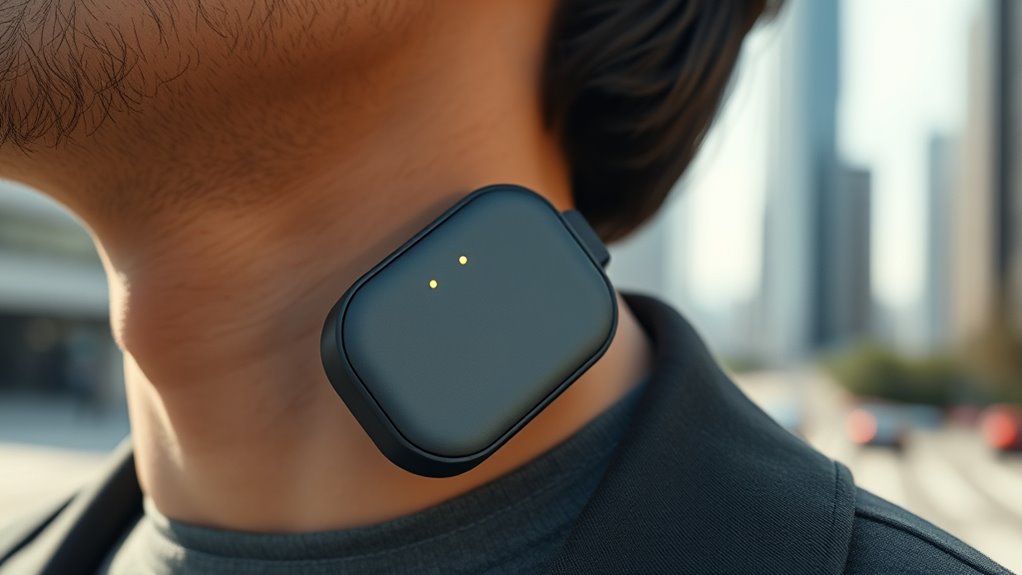
The effectiveness and sleek design of wearable air purifiers rely on advanced core technologies that enable them to filter pollutants efficiently while remaining lightweight and comfortable. Central to these devices are innovative filtering mechanisms, such as high-efficiency particulate air (HEPA) filters or activated carbon layers, which trap harmful particles and odors. These filters are integrated into a compact device design that emphasizes portability and ease of use. The device design also incorporates small, quiet fans to draw in air without creating noise or bulk. Additionally, smart features like sensors and rechargeable batteries enhance convenience. Incorporating advanced filtration technology can further improve their air cleaning capabilities and user experience. For example, the integration of multi-stage filters can enhance purification efficiency across a broader range of pollutants. The use of air quality sensors can help monitor and optimize the device’s performance in real-time. Given the ongoing development in AI safety measures, integrating robust safety protocols into device design can help ensure user safety and data privacy. Implementing battery management systems can optimize power usage and extend device lifespan. By combining effective filtering mechanisms with thoughtful device design, these wearable purifiers aim to deliver clean air on the go without sacrificing style or comfort.
Efficacy: Do They Filter Out Harmful Particles Effectively?
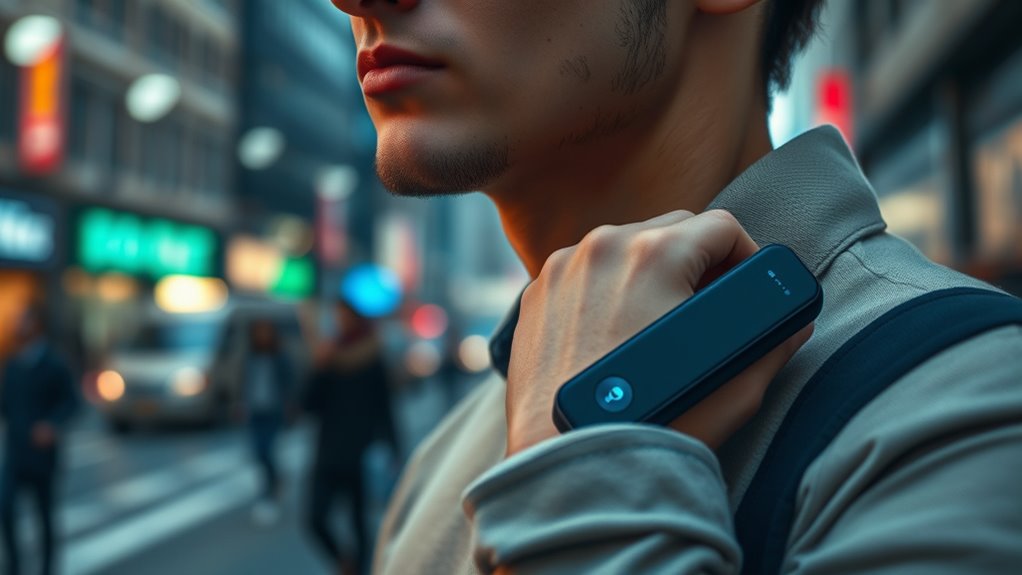
While wearable air purifiers are designed for convenience, their primary function is to effectively filter out harmful particles from the air you breathe. Many models use HEPA filters or activated carbon, which can successfully remove pollutants like dust, pollen, and some airborne viruses. Their efficacy varies depending on the device’s design and filter quality, but generally, they provide a noticeable improvement in air quality around you. When considering cost effectiveness, some purifiers offer good value by combining durability with high filtration performance. Aesthetic appeal also plays a role—sleek, lightweight designs ensure you’re more likely to wear them consistently. Additionally, proper filter maintenance is crucial for maintaining their effectiveness over time, as filters can become clogged and less efficient if not regularly replaced. Regular use combined with adequate airflow can enhance their overall performance. Furthermore, understanding filter replacement intervals can help ensure optimal functioning of the device. Incorporating certified filtration standards can also guide consumers toward more reliable options. Overall, these devices can be effective at filtering particles, but their success depends on choosing a reputable model with proven filtration capabilities.
Limitations and Potential Risks of Using Wearable Air Purifiers
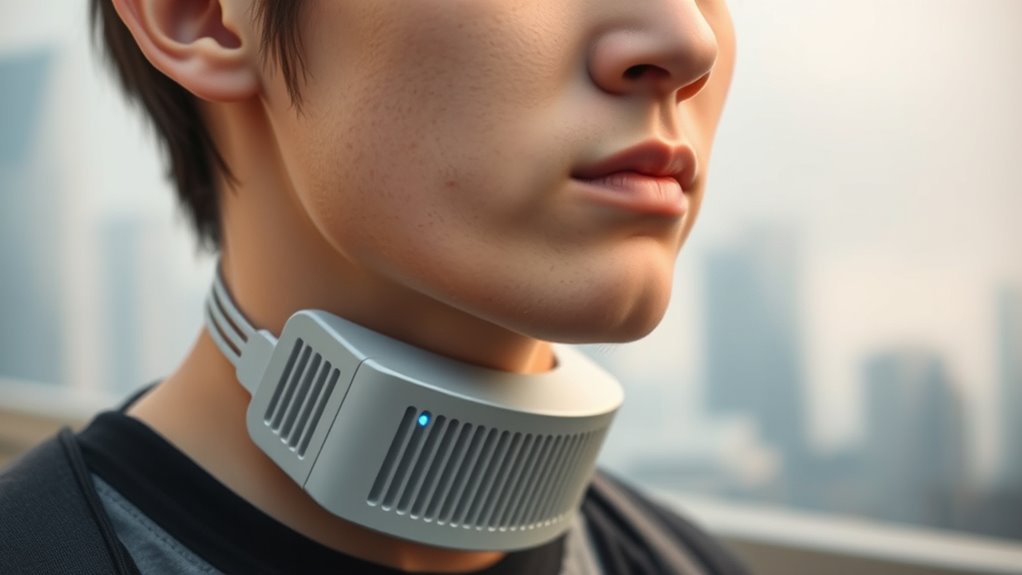
Despite their convenience, wearable air purifiers have limitations that can affect their overall effectiveness and safety. You might worry about health concerns if the device doesn’t filter pollutants properly or if it emits ozone or other byproducts, which can harm your lungs. Device limitations, such as battery life, size, and airflow, also restrict how well they work in different environments. If the purifier isn’t fitted correctly or lacks proper filtration, it may give a false sense of security without actually reducing your exposure to harmful particles. Additionally, reliance on these devices might lead you to neglect other important health measures, like avoiding polluted areas or improving indoor air quality. Understanding aviation regulations and proper device maintenance can help ensure you use wearable air purifiers effectively and safely. Proper filter replacement is essential to maintain the device’s effectiveness and prevent potential health risks. Regularly checking device specifications can help you choose the right model for your needs and ensure optimal performance. Being aware of air quality standards helps you better evaluate whether these devices meet safety guidelines and provide adequate protection. It’s also important to stay informed about emerging air filtration technologies that could improve wearable air purifier efficacy. Always consider these potential risks before depending solely on wearable air purifiers for your health.
Making an Informed Choice: Are They Worth Considering?

Considering the limitations and potential risks of wearable air purifiers, it’s important to evaluate whether they truly meet your needs. Fashion trends influence many choices, but comfort and effectiveness should come first. Reading consumer reviews helps you understand real-world experiences and whether these devices deliver on their promises. If you prioritize style, some models blend seamlessly into your wardrobe, making them more appealing. However, if you need serious protection from pollutants, assess if the purifier’s filtration capabilities match your environment. Weigh the convenience against potential downsides, like battery life or maintenance. Additionally, understanding the technology behind filtration systems can help determine if a device offers adequate protection. A deeper understanding of filtration efficiency can assist in selecting a high-quality product that truly safeguards your health. It’s also beneficial to consider the filter replacement frequency to ensure sustained performance over time. Furthermore, evaluating the materials used in filters can give insights into their effectiveness and safety. Ultimately, making an informed choice involves balancing personal priorities, current technology, and honest feedback from users to decide if a wearable air purifier is worth considering for your lifestyle. Additionally, focusing on quality and expertise can help ensure you select a device that truly meets high standards.
Frequently Asked Questions
How Long Do Wearable Air Purifiers Typically Last Before Needing a Recharge?
Your wearable air purifier’s battery life usually lasts between 8 to 12 hours, depending on usage and model. Charging time varies, typically taking 1 to 2 hours to fully recharge. To guarantee continuous protection, keep an eye on the battery indicator and recharge it before it runs out. Regular charging and maintenance help maximize your device’s lifespan and ensure you stay protected when you need it most.
Are Wearable Air Purifiers Safe for Children and Pregnant Individuals?
Like a shield protecting a fortress, wearable air purifiers can offer some protection, but their safety for children and pregnant individuals isn’t guaranteed. You should prioritize child safety and pregnancy health by consulting healthcare providers before use. While some models claim they’re safe, limited testing means you shouldn’t rely solely on them for ongoing protection. Always choose certified devices and follow manufacturer guidelines to guarantee safety for vulnerable groups.
Can These Devices Effectively Protect Against Viruses and Bacteria?
You wonder if personal wearable air purifiers can effectively protect against viruses and bacteria. While filter effectiveness varies by device, some models do help reduce airborne pathogens, offering additional virus protection. However, they shouldn’t replace masks or other precautions. Wearing one may provide some added safety, but it’s vital to combine it with good hygiene and ventilation. Always check product specifications to guarantee it targets the specific particles you’re concerned about.
Do Wearable Air Purifiers Produce Any Harmful Ozone or Emissions?
Did you know that some wearable air purifiers can emit small amounts of ozone? While they aim to clean the air you breathe, concerns about ozone emission and environmental impact remain. Usually, reputable devices are designed to minimize harmful emissions, but unchecked models might produce ozone that can irritate your lungs or harm the environment. Always check for ozone emission levels before choosing a wearable purifier to guarantee safety.
How Do Wearable Purifiers Compare in Cost and Performance to Traditional Masks?
When comparing wearable purifiers to traditional masks, you’ll find that cost comparison varies based on features and durability. Wearables often have higher upfront costs but can offer better performance metrics, like continuous filtration and tech integration. Masks are cheaper but may provide less consistent protection. Your choice depends on balancing budget with performance needs, especially if you seek convenience and long-term filtering benefits.
Conclusion
While wearing a personal air purifier might seem like a modern miracle, it’s not a magic wand. Think of it as a trusty lantern in a foggy night—helpful but not foolproof. Before investing, weigh its benefits against limitations and consider the air quality around you. Remember, even in the age of Da Vinci’s innovations, the best defense against pollution remains a combination of smart choices and awareness. Stay informed and breathe easier.
